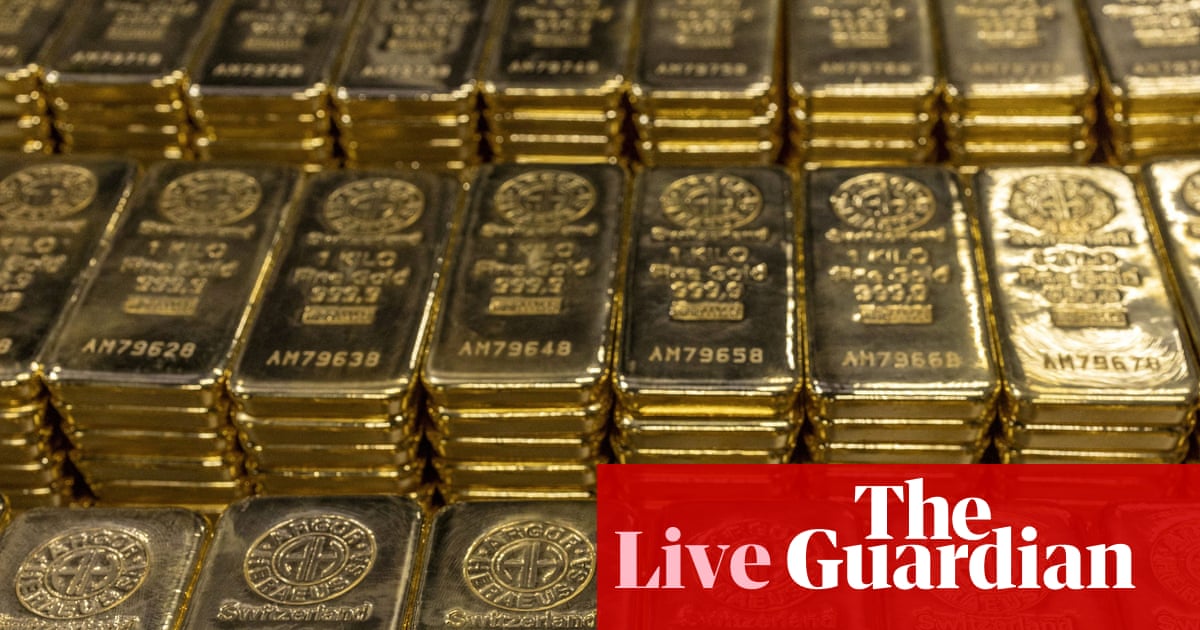
Oil prices are headed for their worst week since June, as investors prepare for the possibility of talks between Donald Trump and Vladimir Putin, and as the latest round of US tariffs weigh on the global economic outlook.
Brent crude futures are on track to fall by around 4% this week, currently trading at $66.36. West Texas Intermediate crude futures are on track to fall by about 6% compared with last week.
Analysts think this is largely because of the impact that Trump’s latest tariffs will have on the global economy. This week, more than 60 countries were hit by sweeping “reciprocal” rates, which range from 10% to 39%, 40% and 41% for Switzerland, Brazil and Syria.
A widely expected meeting between the US president and the Russian leader is also affecting the market, with investors anticipating that eased sanctions on Russia could increase the oil supply. This week Trump increased tariffs on India, in a move he described as punishment for continuing to buy Russian oil.
The UK’s blue chip FTSE 100 stock index has opened slightly higher this morning, up 0.26%.
JD Sports is the strongest riser in the index, with its shares up 2.2%. It is followed by Glencore, with its shares up 1.9% after news this week that the miner decided to keep its primary listing in London, ditching a possible plan to move to New York.
The mid-cap FTSE 250 index is not performing as well, down by about 0.1%. TBC Bank is the worst performer, with its shares falling by as much as 12% in early trading, though the Georgian bank reported a 5% rise in its profits for the second quarter, as well as a new buyback.
Meanwhile, the pound is slipping against the US dollar this morning, even after the Bank of England’s monetary policy committee (MPC) voted to cut its key base rate by a quarter-point to 4% yesterday.
The pound is down 0.13% against the dollar, although it is still above $1.34.
While the Bank has cut rates, it was one of the closest decisions since its independence more than 25 years ago with a 5-4 vote split. The market has lowered its expectations of another quarter cut point this year, in contrast to growing expectations that the Federal Reserve will cut interest rates in the US next month.
On Thursday, Donald Trump said he will nominate Stephen Miran to the Fed’s board of governors for four months, and reports suggest that current governor Christopher Waller is the favourite candidate to serve as the next Fed Chair.
Ipek Ozkardeskaya, senior analyst at Swissquote Bank, says both men are viewed as dovish, which should align with Trump’s ambition for lower rates.
However, the US 2-year yield has barely reacted—reminding us (again) that rate cuts don’t always lower borrowing costs if they aren’t seen as credible or justified. Remember last September, when the Fed unexpectedly slashed rates by 50bps? The 2-year yield jumped nearly 30bps over the following two months. For now, markets still expect the next cut to come in September, keeping the S&P 500 near record highs despite trade uncertainty and policy inconsistency.
Good morning, and welcome to our rolling coverage of business, the financial markets and the world economy.
Gold futures hit a record high on Friday after a Financial Times report that the United States has imposed tariffs on imports of one-kilo gold bars, a move that is expected to ramp up pressure on Switzerland, the biggest precious metal hubs in the world.
The FT has seen a letter from the Customs Border Protection agency which said one-kilo and 100 ounce gold bars should be classified under a customs code subject to higher tariffs.
One-kilo bars are the most popular form of the metal traded on Comex, the biggest gold futures market, and make up most of Switzerland’s bullion exports to the US.
US gold futures rose by. 1.3% at $3,499.30, after hitting an all-time high of $3,534.10. Meanwhile, the price spread between New York futures and spot prices widened by about $100.
It marks another blow for Switzerland, which Donald Trump has hit with a shock 39% export tariff. Swiss companies, whose exports to the US account for about one-sixth of their total foreign sales, face one of the steepest tariff rates in Trump’s trade war regime. Only Laos, Myanmar and Syria had higher figures, at 40-41%. The EU and the UK have negotiated 15% and 10% respectively.
Switzerland exported $61.5bn of gold to the US in the 12 months ending in June, the FT said. This would be subject to a further $24bn in levies under Switzerland’s 39% tariff rate, which came into effect on Thursday, according to the report.








